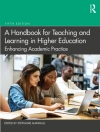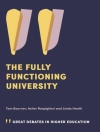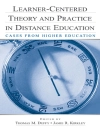‘There is a big difference between assigning complex texts and teaching complex texts…’
—Doug, Fisher, Nancy Frey, and Diane Lapp
….And that’s the crux, isn’t it? That’s why in this brand new edition of the bestselling Text Complexity, the renowned author team provide four new chapters that lay open the instructional routines that take students to new places as readers.
No matter what discipline you teach, you will learn how to craft purposeful instruction pitched to your readers’ comprehension capacities, your curriculum’s themes, and your own assessments on what students need next.
Doug, Nancy, and Diane provide:
- How-to’s for measuring word and sentence length and other countable features of any written work while giving ample consideration to the readers in your room, and how their background knowledge, experiences, and motivations come into play
- A rubric for analyzing literary texts for plot structure, point of view, imagery, clarity, and more—and a complexity scale for analyzing informational texts that describe, inform, and explain
- Classroom scenarios of teachers and students engaging with fiction and nonfiction texts that provide enough of a stretch, so you’ll know the difference between a healthy struggle and frustration
- The authors’ latest thinking on routines that invite students to interact with complex texts and with one another, including teacher modeling, close reading, scaffolded small group reading, and independent reading
It’s time to see text complexity as a dynamic, powerful tool for sliding the right text in front of our students’ at just the right time. Think of this second edition as Text Complexity-2-Go, because it’s all about the movement of minds at work, going deeper than anyone ever thought possible.
สารบัญ
Chapter 1. Text Complexity in a New Light
Chapter 2. Quantitative Measures of Text Complexity
Chapter 3. Qualitative Values of Literary Texts
Chapter 4. Qualitative Aspects of Informational Texts
Chapter 5. Exploring Teacher-Led Tasks: Modeling Expert Thinking
Chapter 6. Exploring Teacher-Led Tasks: Closely Reading Complex Texts
Chapter 7. Exploring Teacher-Led Tasks: Scaffolded Reading Instruction of Complex Texts
Chapter 8. Exploring Peer-Led Tasks: Collaborative Conversations and Peer-Mediated Learning
Chapter 9. Exploring Individual Tasks
เกี่ยวกับผู้แต่ง
Diane Lapp, Ed D, is a distinguished professor of education at San Diego State University where her work continues to be applied to schools. She is also an instructional coach and teacher at Health Sciences High & Middle College. Throughout her career, Diane has taught in elementary, middle, and high schools. Her major areas of research and instruction regard issues related to the planning and assessment of very intentional literacy instruction and learning. A member of both the California and the International Reading Halls of Fame, Diane has authored, coauthored, and edited numerous articles, columns, texts, handbooks and children’s materials on instruction, assessment, and literacy related issues. Diane is the recipient of the ILA 2023 William S. Gray Citation of Merit, a prestigious award reserved for those who have made outstanding contributions to multiple facets of literacy development. Diane can be reached at [email protected]. Follow her on twitter @lappsdsu












